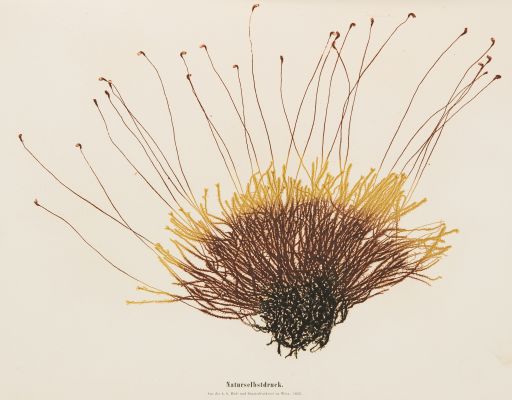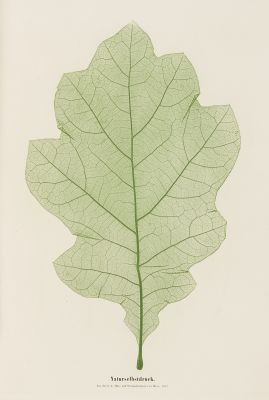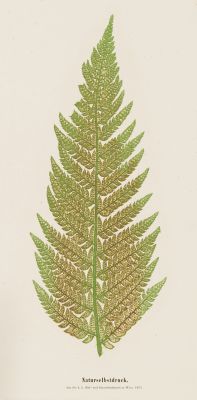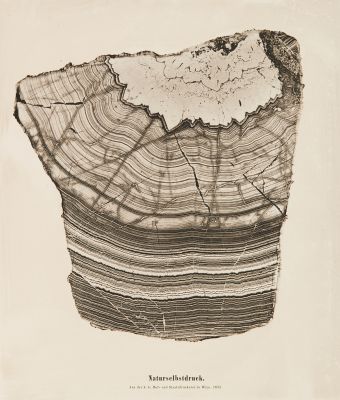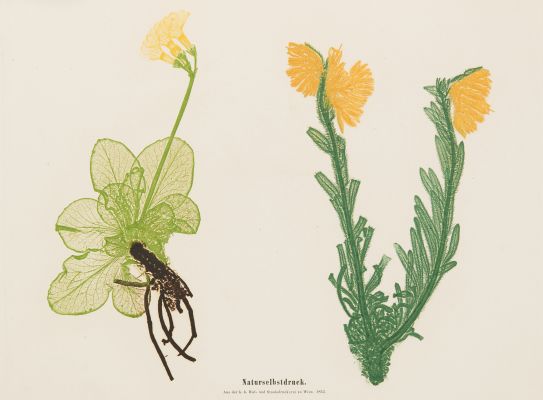
Title
Plate 4 NaturselbstruckArtist
Auer, Alois (Austrian, 1813-1869)Publication
Die Entdeckung Des Naturselbstdruckes oder Die ErfindungDate
1854Process
Nature PrintAtelier
Alois AuerImage Size
23 x 16.8 cm
‘there is no plant, no mineral, no relief, there is nothing raised, deep or flat’ that the nature print cannot reproduce, and as a result we see portrayed before our eyes lace, fossil fish, etched agate, many blossoming plants, leaves and mosses’. From each of these objects the nature print produces a multi-coloured image so vivid ‘that Nature competes with the likeness of the printed copy’. Alois Auer
Die Entdeckung Des Naturselbstdruckes oder Die Erfindung (1854) is a virtuoso display of Alois Auer’s nature printing process, with over 40 separate nature-printed objects, including flowering plants, fossil with fish skeleton, bat wing, snake skin, leaves, fern, mosses, algae. Auer is generally regarded as the man who invented the intaglio form of “nature printing,” using actual specimens of objects to act as a matrix for the printing plate. This volume was printed in answer to Henry Bradbury’s claim to have invented nature printing before Auer.
Nature printing is a printing process, developed in the 18th century, that uses the plants, animals, rocks and other natural subjects to produce an image. Originally nature prints were made by inking items such as fish or leaves with a roller, then printing them onto paper through a process of light controlled rubbing, much like one would print a woodcut. The “Auer Nature Print” however, began with an impression of the object into soft led which rendered a detailed continuous tone photographic likeness of an object without the use of a camera. It is likely that Walter Woodbury utilized a key concept inherent in this process as the basis for creating the popular Woodburytype. Alois Auer of Vienna invented the process in 1852, and Henry Bradbury patented his version of the process in England in 1853. Within ten years the technique was made obsolete by improvements in the photomechanical printing industry, and essentially “Nature Printing” disappeared from use.
Alois Auer named his process “Naturselbstdruckes”, which translates into “Nature-printing”, and then logically the end product of this process would be referred to as a “Nature Print”. However, the popular contemporary use of both of these terms confusingly refers both the original pre-1850’s process of “Nature Printing” and Auers’s. [1]
References
[1] Nicolai Klimaszewski https://www.alternativephotography.com/nature-printing/ Cited 1/23/23
DiNoto, Andrea, and David Winter. The Pressed Plant. New York: Stewart, Tabori & Chang, 2000.


